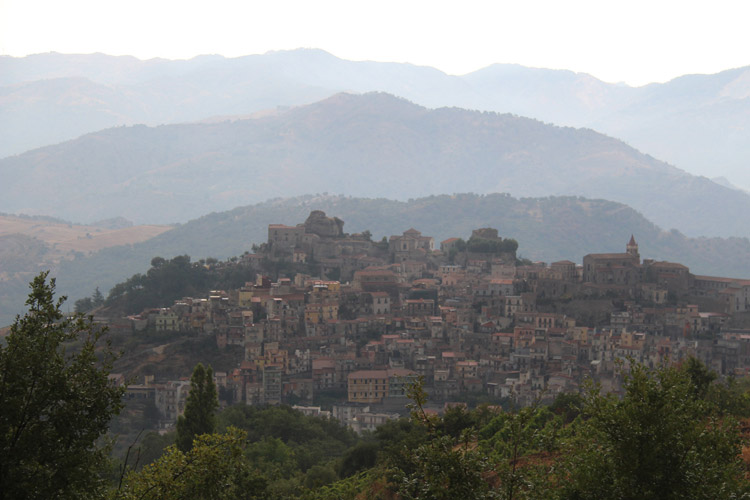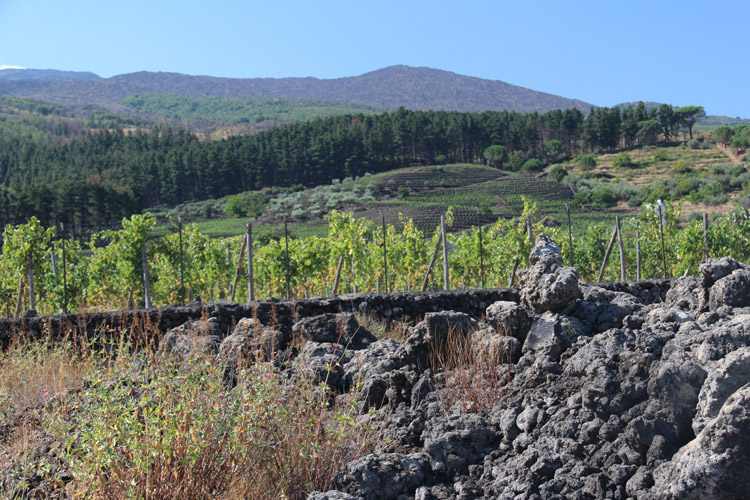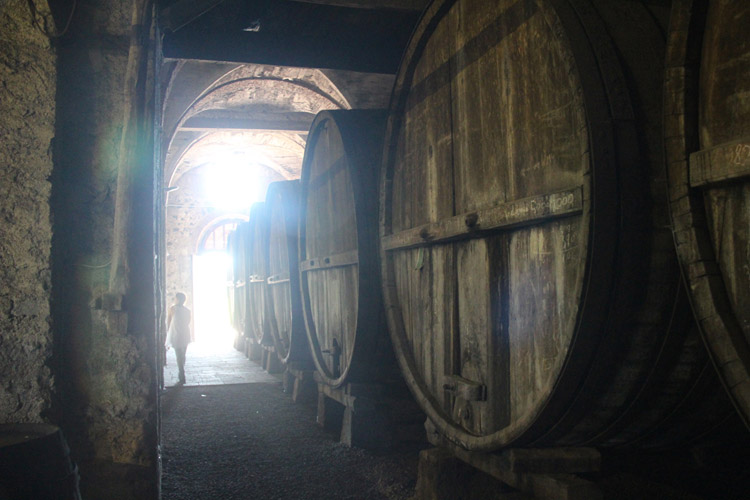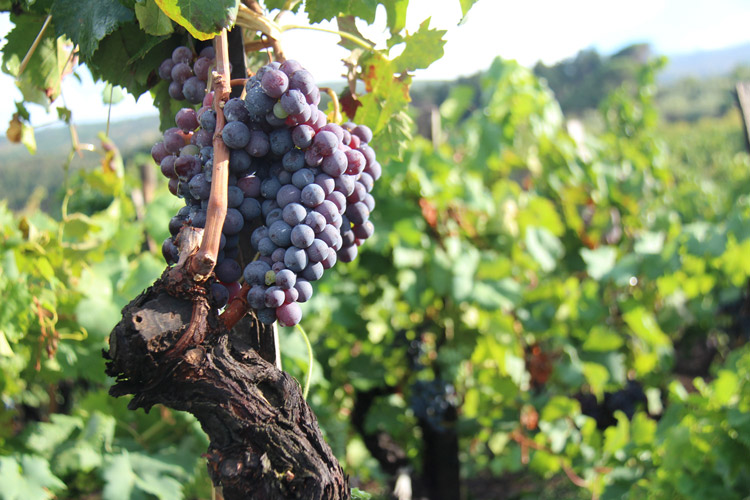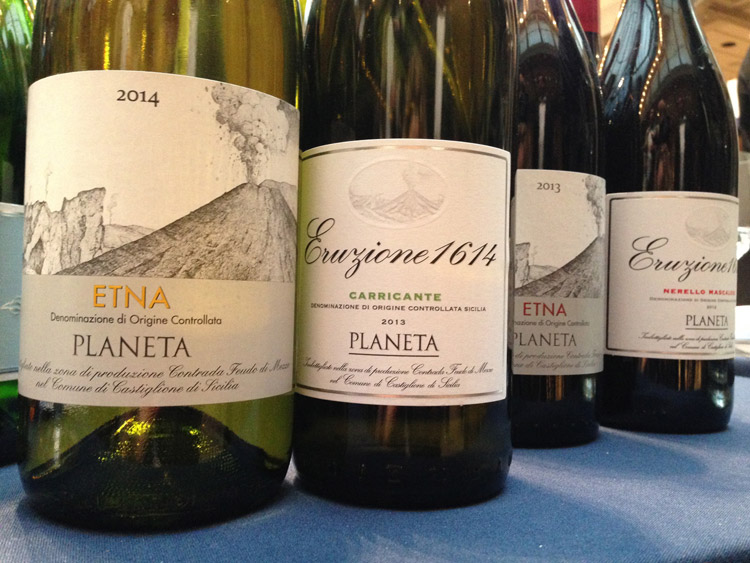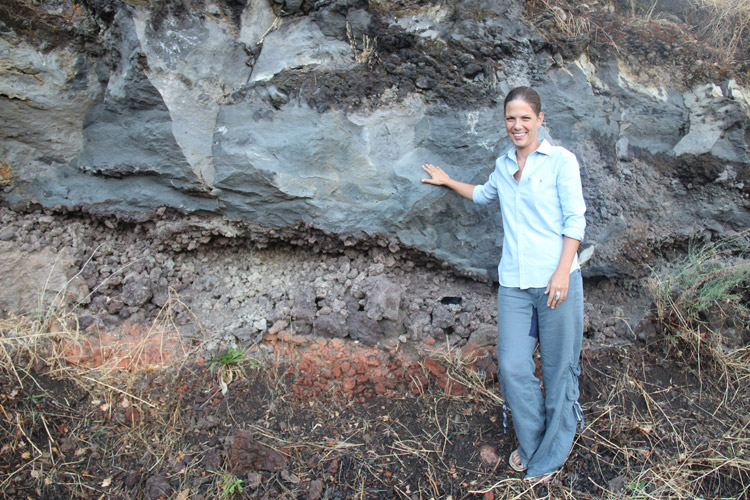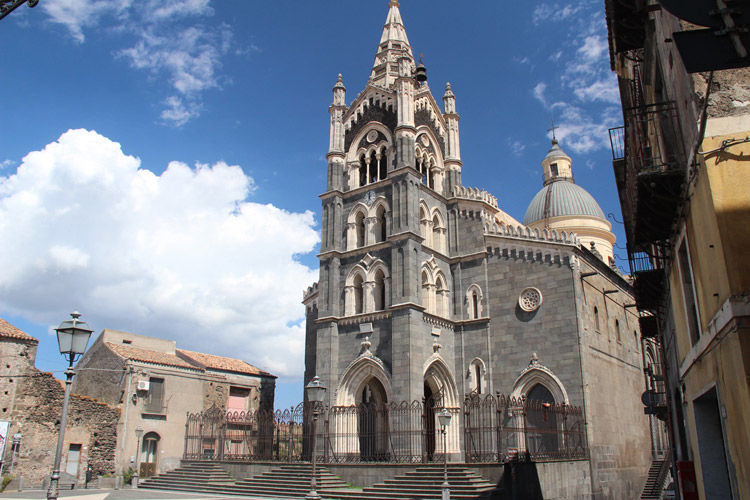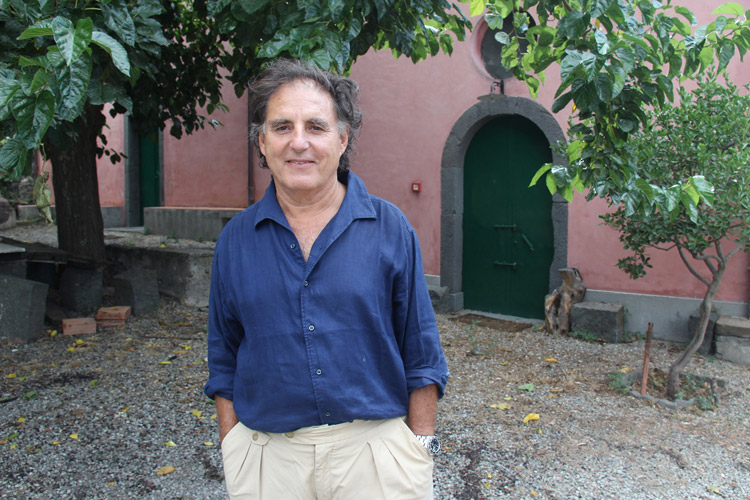Sicily wine tour
Tour eastern Sicily, from Taormina to Mt. Etna to Siracusa
Meet the pioneering winemakers on Mt. Etna
Ascend Europe’s tallest, most active volcano
See the Greek ruins of Taormina & Siracusa
Visit the Baroque city of Noto
ITINERARY
DAY 1 – AN INTRO TO ETNA WINE + TAORMINA TOUR
Welcome to our new Sicily wine tour, on the eastern side of the island. After a morning pick-up at the Catania train station, we visit one of the first wineries to put Etna wine on the map: Benanti. Begun as a hobby by a Catania pharmacist in the 1980s, it grew into a serious but sprawling enterprise. When the sons took over in 2012, they shed properties to focus on their forte: Etna DOC wines, including their highly prized flagship Pietramarina, made from the minerally carricante grape.
We then head up the coast to Taormina, an archeological highlight of eastern Sicily. The ancient Greeks got something right: Location, location, location. In Taormina, they built a theater on a high cliff overlooking the sea, and looking straight out toward the smoking volcano. Talk about drama!
Praised by the German writer Goethe, Taormina was a mandatory stop on the Grand Tour taken by educated Europeans in the 19th century, and it remains just as enchanting today. After a visit to the Greco-Roman theater, you’ll have time on your own to have lunch and explore the town.
Our hotel for this first half of the tour is Feudo Vagliasindi, a century-old winery with a restored aristocratic villa surrounded by vines and abutting the natural park of Mt. Etna. Dinner is at their very fine restaurant. D • Feudo Vagliasindi
DAY 2 – EXPLORING THE NORTH SIDE OF MT. ETNA
Today we go to see the star of the show: Mt. Etna, Europe’s most active volcano, with eruptions averaging every two weeks. It’s also the continent’s tallest, rising to 11,000 feet and snow-capped during the winter months. This hulking presence dominates modern life and ancient myth. The Greeks believed it to be where Vulcan forged Zeus’s thunderbolts.
On the south side, Etna’s four active craters simmer in a desolate lunar landscape of black ash. This is the destination for mass tourism. But to avoid the tour buses, the funicular lines, the procession of 4-wheel drives, and the same redundant cinder ash, one visits the north side. This is where the new wave of Etna winemakers have settled, so if you want to know about Etna wine, you must see the northern slopes.
We’ll ascend by jeep with a geologist guide, visiting lava fields, spent craters, and an underground lava tunnel. There’s an entire geological vocabulary for the crevices and craters, fractures and fissures and buttons that we’ll see, but the word to sum it up is awesome.
Lunch is at Planeta’s new Etna winery Sciara Nuova, started from scratch at the edge of a 1614 lava flow that’s legendary for having lasted 10 years. Here we’ll get better acquainted with the star grapes of the area: carricante (white) and nerello mascalese (red).
Afternoon features another tasting: Frank Cornelissen, an eccentric natural-wine advocate willing to take the road less traveled and one of the first pioneers on Mt. Etna.
Dinner is at a cozy restaurant in Randazzo. B, D • Feudo Vagliasindi
DAY 3 – THE PIONEERS OF ETNA WINE
Like wine critics everywhere, you’ll be seduced by the nerello mascalese grape. Much like pinot noir and nebbiolo, it’s extremely responsive to terroir. And on the northern slopes of Etna, the terroir changes every 20 feet, being a patchwork of hardened volcano flows. Though bulk wine has been made on Etna for centuries, only in the last 20 years have winemakers attempted to make premium bottled wine from the wizened centurion bush vines on ancient terraced vineyards. Some are making single-vineyard bottlings from specific lava fields. Today spotlights two of these pioneers.
We begin with Graci, founded in 2004 by the Graci family from Catania and run by Alberto, who left his banking job in Milan to follow in his grandfather’s footsteps. We continue with the pioneering Tenuta delle Terre Nere, founded by Marc De Grazia, a former U.S. wine importer, who has perhaps the largest array of single-vineyard bottlings of any Etna winery and was the mover and shaker behind getting contrade, or lava-flow-based viticultural subzones, listed on the label. B, D • Feudo Vagliasindi
DAY 4 – TOUR SIRACUSA, ANCIENT ISLAND CITY
Today we head south to the ancient seaside city of Siracusa, or Syracuse. But before leaving the Etna DOC zone, we’ll stop at one more winery.
Siracusa is brimming with ancient ruins, mysterious grottos, Gothic and Byzantine churches, and a medieval seaside castle, which we’ll see on a guided walking tour. The historical center is actually a small island called Ortigia (derived from ortyx or quail), where one finds the largest Greek theater in all of Europe. There’s also a Roman amphitheater and the Orecchio di Dionisio, a limestone cave shaped like an ear (orecchio). Siracusa’s main cathedral, built on the site of an ancient temple, simply incorporated the Greek columns into its lateral walls. The city also has a long and beautiful lungomare, or seaside promenade. There’s much to explore!
We wind up the day at our hotel in the heart of the historic center. Tonight it’s dinner on your own. B • Palazzo Gilistro
DAY 5 – THE WINES OF NOTO, THE PEARL OF THE BAROQUE
Sicily is a land of earthquakes, and there was a doozey in 1673, which knocked down the entire city of Noto. When the town rebuilt, it did so in the fashionable Baroque style. Today it’s considered a masterpiece of the Sicilian Baroque. Seeing the sights, you’ll understand why UNESCO declared it a World Heritage Site.
The sun-baked region of Val di Noto is one of the best for nero d’avola, Sicily’s most important red grape, which originated a few miles north, around the town of Avola. The area is also known for its fragrant Moscato di Noto wine, in both dry and passito versions. We’ll get the lowdown on Noto wines at two wineries: Zisola, founded by one of the Mazzei brothers from Chianti (the acclaimed Fonterutoli winery), and Tenuta La Favola, a fifth-generation, certified-organic farm.
At our farewell wine dinner in Siracusa, we’ll toast ancient lands and new friends! B, D • Palazzo Gilistro
DAY 6 – ARRIVEDERCI
After breakfast, we head to the Catania airport (1 hour) and say buon viaggio!
Want to see western Sicily instead? Check out Discover Sicily. Want a Sicily wine tour with some hiking? We do that too! See Sicilian Saunter.
TRIP NOTES
Airport
Catania–Fontanarossa Airport (also named as Vincenzo Bellini Airport), located 5 miles southwest of Catania, Sicily’s second largest city.
Pre-tour
Plan to land in Catania a day before the tour begins; that’s necessary to be at our starting point on time. For options getting from the airport into town, click here.
Meeting point
In front of the Catania train station, Stazione Catania Centrale. (See map.)
Departure day
Shuttle to the Catania airport.
Trip extensions
The eastern side of Sicily is where you’ll find many of the island's most famous archaeological sites. Thus, if you wish to spend some extra time in Sicily pre or post-tour, you could easily devote a couple of days to touring this area by car. (Public transportation leaves much to be desired.) Pick up your rental car at the airport, then do a loop trip.
Caltagirone, a town founded by the Arabs and famous for its ceramics (caltagirone means land of vases in Arabic)
Piazza Armerina and Villa Romana del Casale, a Roman patrician Roman residence with sophisticated and well-preserved floor mosaics.
Ragusa, another UNESCO World Heritage city in the Val di Noto, is known for its Baroque architecture.
To venture all the way to western Sicily, you should allow a few more days for sightseeing. The drive from Catania to Palermo is 2-1/2 hours by highway. (Palermo has Sicily’s other airport, so you could fly into one city and fly out of the other.)
Travel insurance
This is recommended to protect you from needless loss caused by last-minute cancellations, lost luggage, and more. Three sources are Travelex Insurance, (800) 228-9792; CSA Travel Protection, (800) 348-9505; and Travel Guard, (800) 826-1300.
Weather
When packing, check www.weather.com. Go to “Catania, Italy” to get a general idea of temperatures and forecast.
For cancellation policy & more, see our General Information page.
2020 dates
Contact us to set up dates.
Price for custom tour
$3,795/person for group of 2
Inquire about price for groups of 4 or more.
Single supplement: $350
Add 3% commission if paying by credit card.
Price based on accompanying 6-day itinerary for 2 pax with double occupancy; discounts for larger groups. Modifications are possible, including the number of days, level of accommodations, amount of wine tastings, and inclusion of meals.
Optional: If you open your tour for others to join, you could potentially save money. We’ll quote a price for a guaranteed departure for your core group, then a lesser price if others sign up too. That tour will be added to our 2020 Calendar.
Meet
The main train station in Catania, called Stazione Catania Centrale
Depart
Catania airport
What's included
- 5 nights accommodations (double room) in two hotels, with breakfast buffet
- 4 gourmet dinners (three courses with wine)
- All wine tastings mentioned
- Entry to Taormina's Greco-Roman theater
- Guided walking tour of Siracusa
What's not included
- Air travel
- 1 dinner on your own & all lunches
- After-dinner drinks, or special wines at tastings that are not part of what is provided to the group
- Items of a personal nature
- Anything not specified as included



